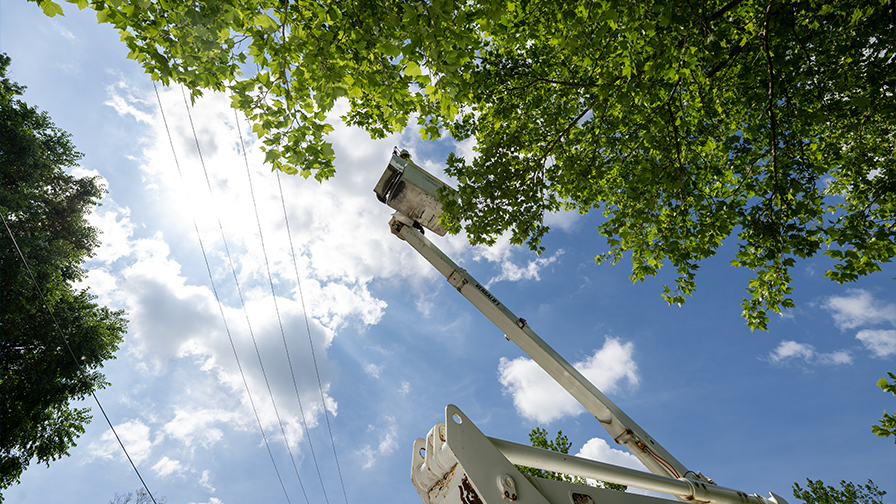Five-Minute Meeting: Minimum Approach Distance for Insulated Aerial Lifts

Five-Minute Meeting: Minimum Approach Distance for Insulated Aerial Lines
Aerial lifts must never contact any energized line.
As a qualified line clearance arborist, you are aware that the American National Standards Institute (ANSI) Z133 and the Occupational Safety and Health Administration (OSHA) require workers to maintain a minimum approach distance (MAD) from energized lines. A minimum approach distance chart can be found on insulated aerial lifts and within the Z133. To read the minimum approach distance chart, one must first know the voltage of the line.
A common voltage found on most job sites is 240-volt secondary service wires. These are frequently found running from a transformer to a residential property and between poles, below the transformer, and above the communication wires. According to the Z133, the minimum approach distance for this voltage of wire, for a qualified line clearance arborist is to avoid contact.
Furthermore, the minimum approach distance also applies to aerial lifts, including those that are insulated. In fact, with the exception of dielectrically-tested pole tools, minimum approach distances apply to ropes and most other equipment found on a tree trimming truck. This is because the insulating qualities of an aerial lift can become compromised during regular use and by contaminants such as water, dirt, and oil. While the probability of the insulated portion of a boom to conduct is low, the possibility is still there. Therefore, to protect aerial lift operators, ground personnel, and the public, minimum approach distances must be adhered to with aerial lifts.
No worker shall ever have any portion of their aerial lift, including the insulated portion, come in contact with any energized line, including 240 V service wires.
ACRT Arborist Training provides entry-level through advanced arborist classes and certifications for line clearance companies, government agencies, tree care companies, municipalities, and individuals around the nation.
SUBSCRIBE
Subscribe to our mailing list to receive updates.
Categories
Recent Posts
- How-To: Learning Knot Basics 02th Aug 2018
- How-To: Tying a Stopper knot 07th Aug 2018
- How-To: Selecting the Right Safety Vest 21th Aug 2018
- How-To: Tying a Slip Knot 04th Sep 2018
- How-To: Inspecting Your Snaps 18th Sep 2018
Training the Next Generation
All our classes are built on industry safety practices. Ready to start learning?